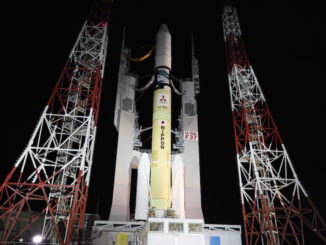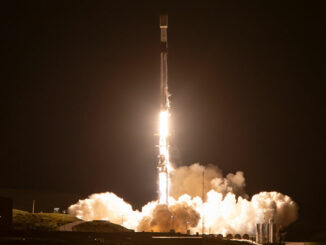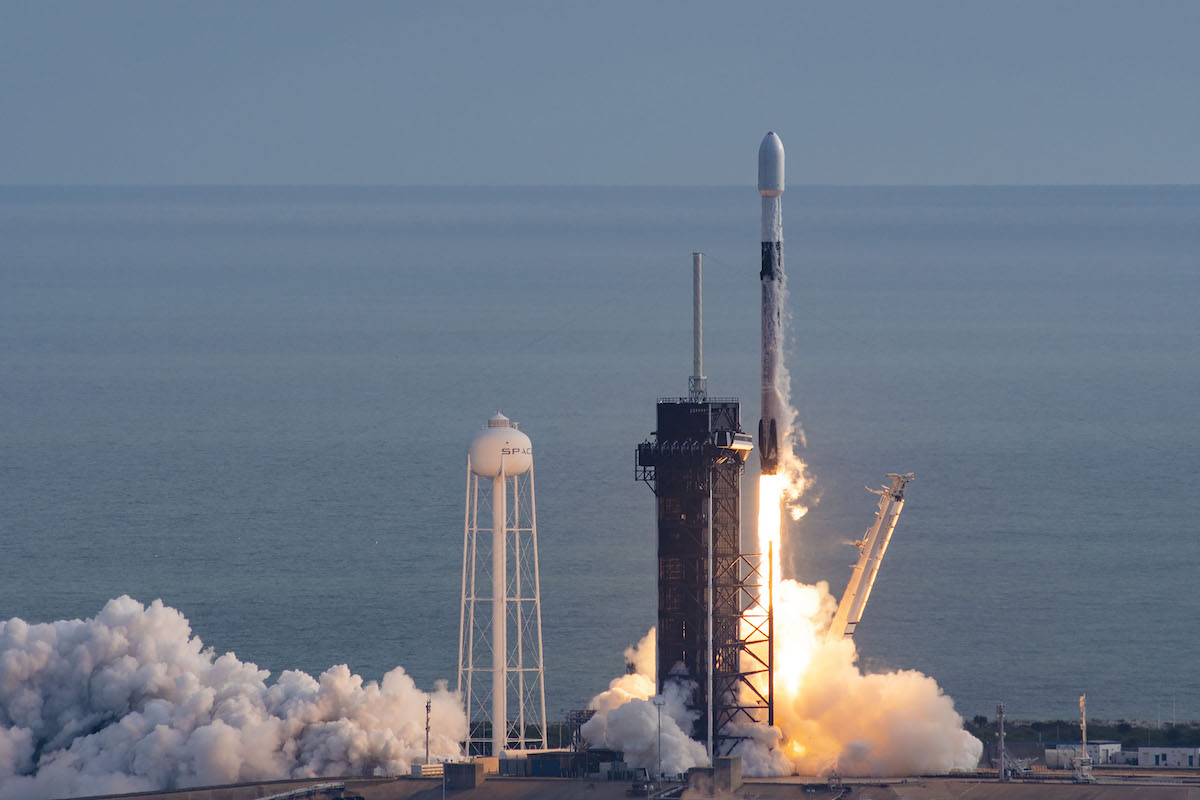
SpaceX hurled a secret cargo into space for the U.S. government’s spy satellite agency Saturday, the 30th rocket launch to fly into Earth orbit from pads on Florida’s Space Coast in 2020. The Falcon 9 flight broke an annual record for missions to reach orbit from the Florida spaceport that stood for 54 years.
It was the 31st major rocket launch from Florida’s Space Coast overall this year, including a high-altitude demonstration of SpaceX’s Crew Dragon abort system in January.
SpaceX logged 25 launches from Florida this year — with 24 orbital missions — and United Launch Alliance flew six times with its Atlas 5 and Delta 4-Heavy rocket families.
Before 2020, the previous record for launches from the Space Coast that reached orbit was 29, a mark set in 1966. There were 31 orbital launch attempts from Cape Canaveral that year, plus two suborbital test flights of the Apollo-era Saturn 1B launcher, for a total of 33 space launches from Florida in 1966, according to a launch log maintained by Jonathan McDowell, an astronomer at the Harvard-Smithsonian Center for Astrophysics who tracks global satellite and launch activity.
A run at breaking that record will have to wait for another year.
SpaceX’s second dedicated mission for the National Reconnaissance Office — and the company’s 26th and final flight of the year — took off at 9 a.m. EST (1400 GMT) Saturday.
A 229-foot-tall, or 70-meter, Falcon 9 rocket gave the classified payload an eight-minute ride into orbit from pad 39A at NASA’s Kennedy Space Center in Florida.
Nine Merlin 1D engines flashed to life and powered the 1.2-million-pound launcher off pad 39A at the Kennedy Space Center, driving the Falcon 9 through scattered clouds toward the northeast from Florida’s Space Coast.
The kerosene-fueled launcher shut down its first stage engines nearly two-and-half minutes into the flight, allowing the booster to drop away and begin a “boostback” maneuver by reigniting some of its engines.
The booster reversed course and made a supersonic descent back to Cape Canaveral Space Force Station, where the rocket settled to an on-target touchdown on Landing Zone 1 a little more than eight minutes after takeoff.
The reusable booster, designated B1059, completed its fifth trip to space and back. It was the 70th time SpaceX successfully recovered a Falcon booster since nailing the first intact landing on Dec. 21, 2015, five years ago Monday.
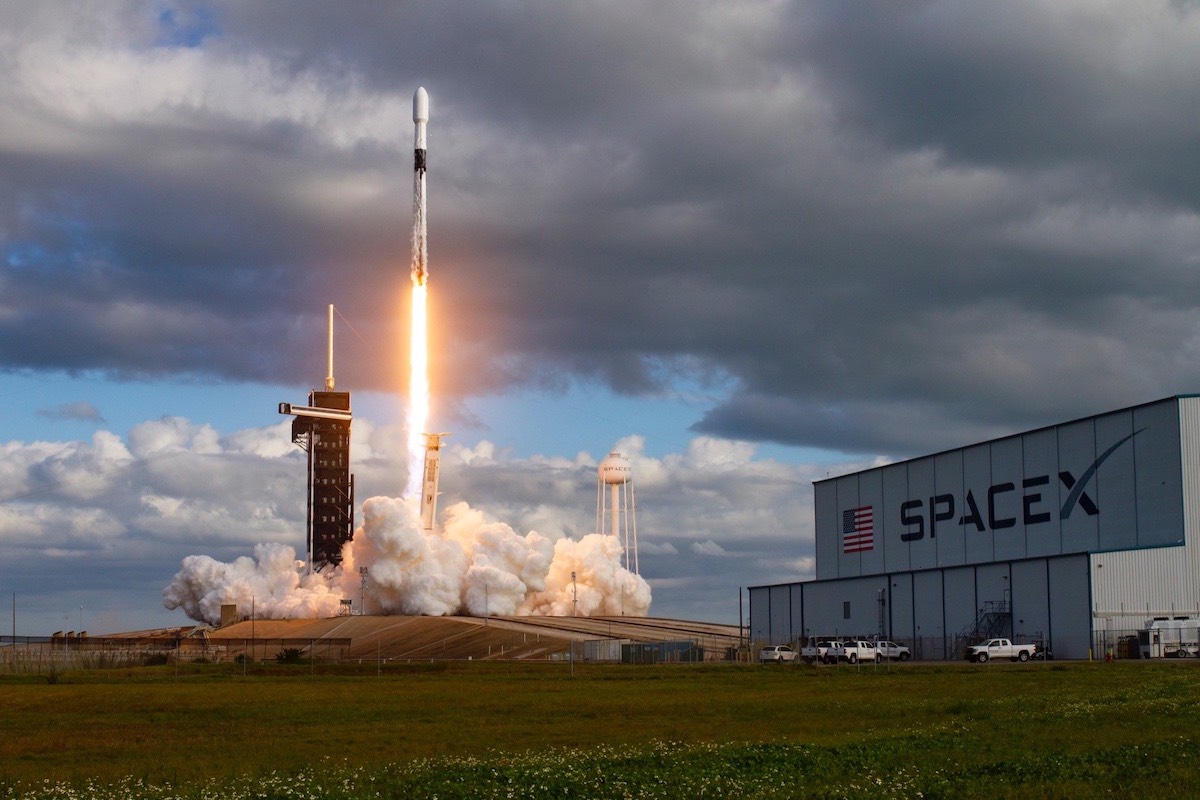
The exact purpose of the NRO payload on Saturday’s mission, codenamed NROL-108, was kept secret by the government spy satellite agency. SpaceX’s live webcast of the launch focused on the return of the first stage to Cape Canaveral, and ended live video from the upper stage at the request of the NRO.
The NRO declared the launch a success in a tweet several hours after liftoff, wrapping up the intelligence-gathering agency’s sixth launch of the year.
It was the 26th Falcon 9 launch by SpaceX alone this year, including 25 flights from Florida and one from Vandenberg Air Force Base in California. SpaceX’s previous record for the most Falcon launches in a year was 21 in 2018.
“NROL-108 carries a national security payload designed, built and operated by the National Reconnaissance Office,” a NRO spokesperson said in response to questions from Spaceflight Now. “Additional details about the payload and its mission are protected. The name or names of the contractor or contractors associated with building this payload is/are also protected.”
The NROL-108 mission did not appear on any public launch schedules until early October, when Spaceflight Now was first to report the existence of the mission. At that time, the mission was scheduled for Oct. 25, but the flight was delayed several times amid changing SpaceX launch schedules and other NRO launch activity at Cape Canaveral.
SpaceX’s reusable Falcon 9 first stage has landed back at Cape Canaveral, marking the 70th successful recovery of a Falcon booster since the first landing five years ago Monday. https://t.co/6EVsocdJ32 pic.twitter.com/BGM5GAeXCO
— Spaceflight Now (@SpaceflightNow) December 19, 2020
SpaceX scrubbed an initial launch attempt for the NROL-108 mission Thursday to evaluate slightly high pressure readings inside the Falcon 9 rocket’s upper stage liquid oxygen tank. Crews at pad 39A lowered the rocket horizontal for inspections before raising it vertical again late Friday.
The NRO broke with standard practice to procure the launch commercially, outside of the government’s established contracting schemes.
An NRO spokesperson confirmed the agency procured launch services for the NROL-108 on its own, without going through the U.S. Space Force’s National Security Space Launch program.
“The NRO uses a variety of methods to procure launch services in support of the agency’s overhead reconnaissance mission, to include partnering with U.S. Space Force under the National Security Space Launch (NSSL) program,” an NRO spokesperson said.
“In some cases, the NRO uses alternative methods to procure launch services after making a cumulative assessment of satellite risk tolerance, needed launch dates, available launch capabilities, and cost — all with a purpose of ensuring satellites are safely and securely delivered to orbit in a timely manner,” the spokesperson said.
The National Security Space Launch program is used for the government’s most critical military and intelligence-gathering satellites.
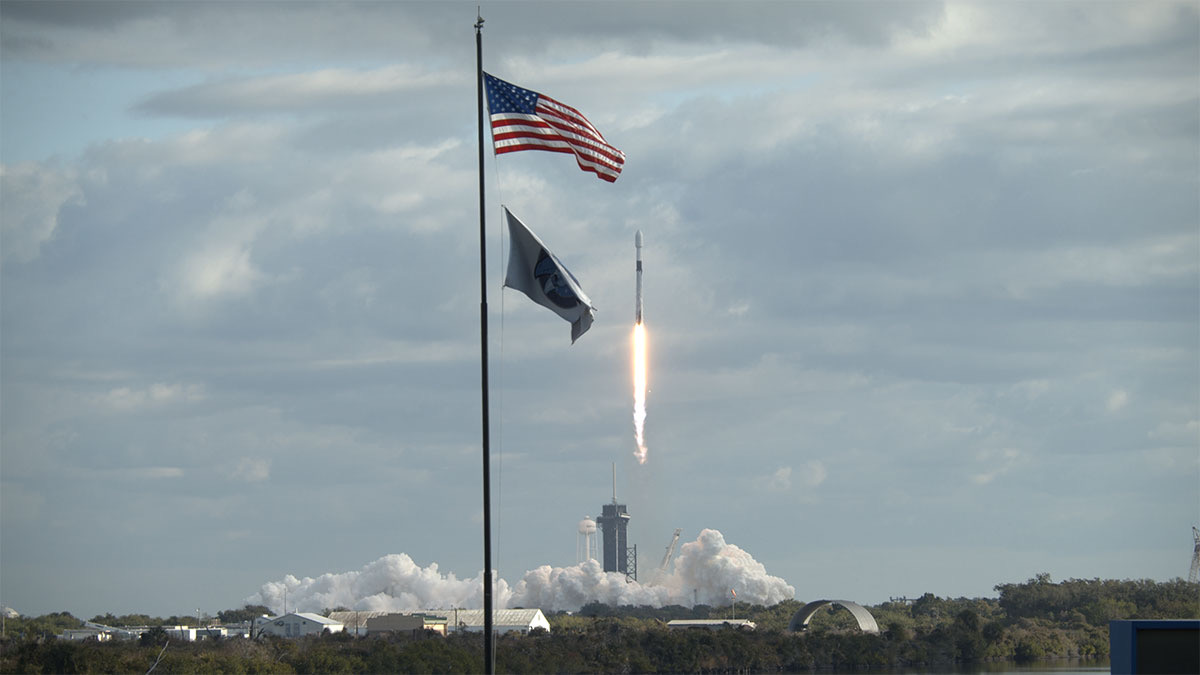
The NRO booked SpaceX for the NROL-108 launch on a commercial basis, reserving the flight on SpaceX’s manifest similar to the way a private satellite operator would purchase a ride. That usually costs less than a U.S. government launch contract, which comes with extra oversight and other additional costs.
SpaceX’s previous dedicated NRO mission — NROL-76 in 2017 — was also part of a commercial launch service arranged between the spy satellite agency and Ball Aerospace, a satellite manufacturer based in Boulder, Colorado. Ball Aerospace booked the launch with SpaceX on behalf of the NRO, and handed over the classified payload to the NRO after it was safely in orbit.
The commercial nature of the NRO’s launch contract with SpaceX gave the Federal Aviation Administration regulatory oversight over the mission, just as if the Falcon 9 was launching a privately-owned payload.
The launch was the 38th FAA-licensed commercial space launch of the year by a U.S. company, exceeding the previous mark of 33 such missions in 2018. That number includes space launches from other U.S. spaceports, and flights by U.S.-headquartered Rocket Lab from its privately-owned base in New Zealand.
“The future for this industry is no longer conjecture, prognostication and wishful thinking,” said Wayne Monteith, the FAA’s associate administrator for space transportation. “It is demonstrated an accelerated growth. It is an increase in cadence on steroids.”
“We’ve launched more commercial space launches in just the last four years than we did in the previous 15 years combined,” Monteith said Tuesday in virtual presentation at the Space Foundation’s Space Symposium 365 forum. “In 2011, we only had a single commercial space launch.”
“Next year, we should easily surpass 50 commercial launches, and potentially over 100 shortly thereafter,” Monteith said. “We see mega-constellations going up, and we see the beginnings of an exceptionally robust space tourism sector. We see initiatives for commercial off-world efforts. We see commercial companies who can return material from space.”
SpaceX will begin its 2021 launch campaign in early January, when a Falcon 9 rocket is scheduled to send the Turksat 5A communications satellite into orbit Jan. 4 from pad 40 at Cape Canaveral Space Force Station. Another Falcon 9 launch from Florida in mid-January will loft dozens of small satellites in a commercial rideshare mission for numerous U.S. and international customers.
Purpose of NROL-108 remains a mystery
Marco Langbroek, a Dutch archaeologist and an expert in satellite movements, said information gleaned from airspace warnings about the orbit targeted by the NROL-108 mission reveal few insights about the payload’s likely purpose.
The launch track toward the northeast and the location of the Falcon 9’s upper stage re-entry over the Pacific Ocean suggest the mission was expected to place its cargo into an orbit inclined around 52 degrees to the equator, according to Langbroek.
The Falcon 9 reserved enough propellant in its first stage to return to a landing at Cape Canaveral, rather than aiming for an offshore landing on a SpaceX droneship. That indicated the mission is likely aiming for a relatively low orbit a few hundred miles above Earth, Langbroek wrote on his website, similar but not identical to the orbit of the NROL-76 mission in 2017.
The expected orbit for the NROL-108 mission does not match the NRO’s known fleet of optical, radar, and signals intelligence satellites, expert analysts said.
A group of hobbyist satellite trackers will attempt to locate the NROL-108 payload after launch. The military does not release orbital data on U.S. national security satellites.
“It will be interesting to see in which orbit NROL-108 will end up,” Langbroek wrote. “As I have remarked with some launches earlier this year, the latest NRO launches all seem to be ‘new’ kinds of payloads that are likely experimental/mission demonstrators, and which go into ‘new’ kinds of orbits.”
“The character of the mission is a mystery: this looks to be something new again,” he wrote.
New blogpost:
“NROL-108: another mystery launch perhaps similar to NROL-76 (USA 276)?”https://t.co/yznJKJLuVr@SSC_NL pic.twitter.com/EQHZM26ykQ— Dr Marco Langbroek (@Marco_Langbroek) December 15, 2020
Ted Molczan, a Canadian satellite observer, said Langbroek’s orbit estimate suggests the NROL-108 payload will repeat ground coverage every three days or so.
“Ground tracks that repeat at intervals two to four days are a common feature of NRO satellites,” Molczan told Spaceflight Now. “They enable rapid revisit of targets, which is useful for reconnaissance.
Molczan cautioned that although observers and analysts can deduce information about NRO satellites through orbital information, optical characteristics, and radio transmissions, the exact mission may remain secret.
“Though much can be deduced through analysis of orbits, optical characteristics, and radio transmissions, the exact mission may remain secret until someone with insider knowledge leaks it to the news media,” Molczan said.
Email the author.
Follow Stephen Clark on Twitter: @StephenClark1.


